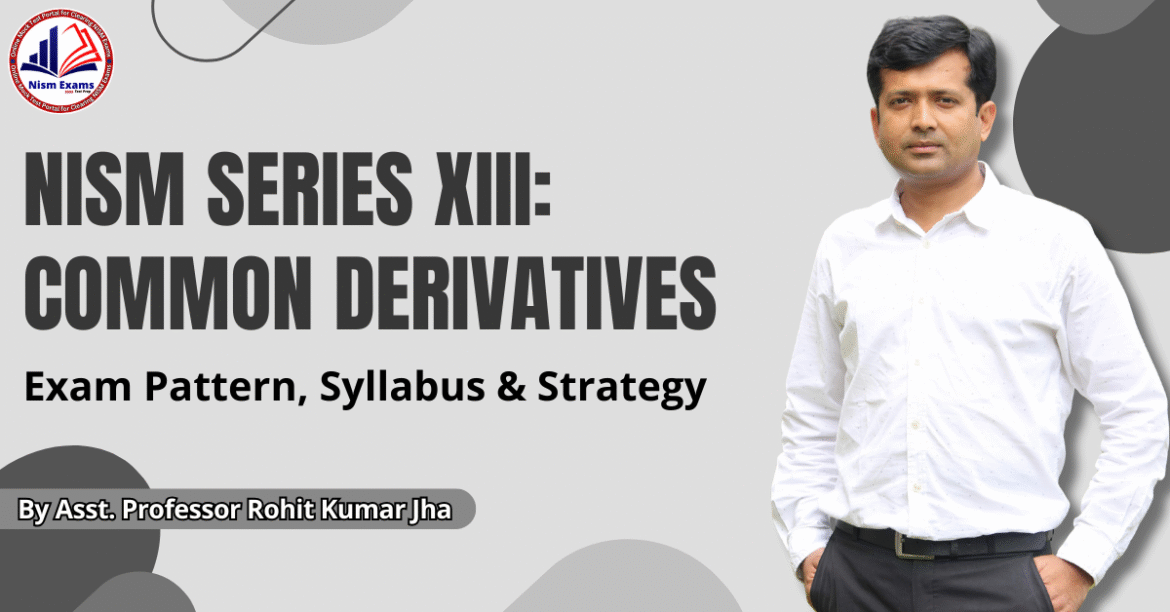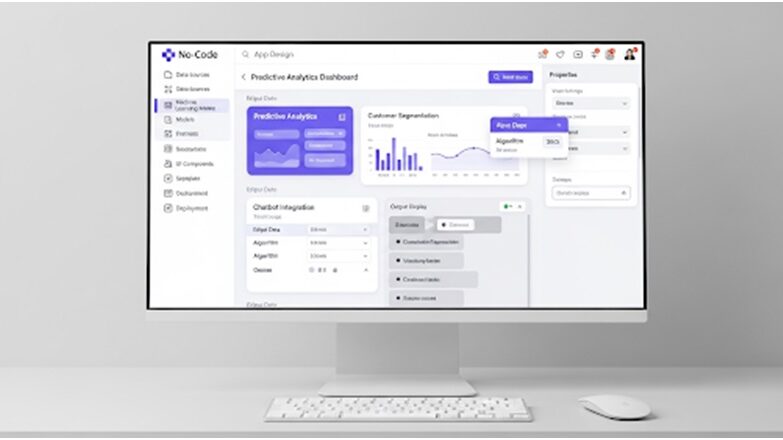In my 25 years of teaching finance and preparing students for professional certifications, I have become very familiar with a specific kind of anxiety. It is the anxiety that creeps in when a student turns the page of their workbook and is confronted not by a concept, but by a complex numerical problem. The formulas, the calculations, the multiple steps—it can be incredibly intimidating. This is especially true for the NISM Series XIII: Common Derivatives Certification Examination, an exam where quantitative questions are not just present; they are at the very heart of the syllabus.
Many students make the mistake of believing they can pass by just mastering the theory. This is a fundamental error in strategy. The NISM XIII exam is designed by the regulator to test your ability to apply your knowledge. The numerical problems are not there to test your maths skills; they are there to test your ability to think like a professional, to analyse a situation, and to calculate the risk and reward of a financial position.
To conquer this exam, you must conquer the numericals. And the secret to conquering them is not rote memorisation; it is deconstruction. It is about taking a complex problem and breaking it down into a series of simple, logical steps.
In this detailed, problem-solving guide, I want to act as your tutor. We will take two of the most challenging types of numerical problems you will face in the NISM XIII exam—a complex option strategy payoff and a practical currency hedge—and I will deconstruct them for you, step by step. My goal is to replace your anxiety with a clear, confident methodology.1. Why the NISM XIII Exam is Heavy on Numericals
Before we dive into the problems, let’s understand why they are so important. The NISM XIII exam is not an academic test. It is a professional licensing exam. In the real world, a derivatives professional is constantly dealing with numbers. They need to calculate the cost of a strategy, the potential profit, the maximum loss, and the break-even point in a matter of minutes.
The exam’s structure, with its 150 questions in 180 minutes and 25% negative marking, is designed to simulate this high-pressure environment. The numerical problems are the ultimate test of your practical competence. Preparing for them requires a tool that mirrors this challenge, which is where a high-quality NISM XIII Model Test becomes essential.
- Numerical #1: The Payoff of a Bull Call Spread (Equity Derivatives)
This is a classic options strategy question that tests your understanding of multi-leg option positions. It often trips up students who are only used to simple call or put buying.
The Real-World Scenario
An options trader, Priya, has a moderately bullish view on Nifty 50 for the upcoming month. The Nifty is currently trading at 23,500. She wants to create a strategy with limited risk. She implements a Bull Call Spread by:
- Buying one lot of a 23,600 strike price Call Option for a premium of ₹150.
- Selling one lot of a 23,800 strike price Call Option for a premium of ₹70.
The lot size for Nifty is 50. What is the Net Premium, Break-even Point, Maximum Profit, and Maximum Loss for her strategy?
A Step-by-Step Deconstruction
Don’t be intimidated by the two legs of the trade. Let’s break it down logically.
Step 1: Calculate the Net Premium Paid
This is always the first step in any multi-leg option strategy.
- Premium Paid (for the bought call): ₹150
- Premium Received (for the sold call): ₹70
- Net Premium Paid = Premium Paid – Premium Received = ₹150 – ₹70 = ₹80 per unit.
- Total Net Premium Paid = ₹80 x 50 (Lot Size) = ₹4,000.
This is the total cost to enter the strategy.
Step 2: Calculate the Maximum Possible Loss
This is the easiest part. In any strategy where you pay a net premium, your maximum possible loss is simply the total net premium you paid. If the Nifty closes below 23,600, both options will expire worthless, and Priya’s loss will be limited to the ₹4,000 she paid to set up the position.
- Maximum Loss = Net Premium Paid x Lot Size = ₹80 x 50 = ₹4,000.
Step 3: Calculate the Break-even Point
The break-even point is the level at which the strategy will have zero profit and zero loss at expiry. For a Bull Call Spread, the formula is simple:
- Break-even Point = Strike Price of the Bought Call + Net Premium Paid
- Break-even Point = 23,600 + 80 = 23,680.
At this level, the profit from her 23,600 call option will exactly cover the net premium she paid.
Step 4: Calculate the Maximum Possible Profit
The profit in a spread strategy is always capped. The maximum profit is achieved when the Nifty closes at or above the strike price of the sold call (23,800).
- Maximum Profit (per unit) = (Strike Price of Sold Call – Strike Price of Bought Call) – Net Premium Paid
- Maximum Profit (per unit) = (23,800 – 23,600) – 80
- Maximum Profit (per unit) = 200 – 80 = ₹120.
- Total Maximum Profit = ₹120 x 50 (Lot Size) = ₹6,000.
By breaking it down into these four logical steps, a complex-looking problem becomes a simple, manageable calculation. This is the kind of problem you would find in a NISM 13 Practice Test.
- Numerical #2: Hedging an Import Payment (Currency Derivatives)
This numerical tests your ability to apply derivatives to solve a real-world business problem. It is a core competency for any professional dealing with international finance.
The Real-World Scenario
An Indian company, ‘Bharat Electronics Ltd.’, imports components from the USA. They have a payment of $500,000 due in one month. The finance manager is worried that the Rupee will depreciate against the dollar.
Market Data:
- Current USD/INR Spot Rate: ₹83.50
- One-Month USD/INR Futures Price: ₹83.75
- Contract Size of USD/INR Futures: $1,000
The finance manager decides to hedge this exposure. One month later, on the settlement date, the USD/INR spot rate has moved to ₹84.50. Calculate the net financial outcome of this hedging strategy.
A Step-by-Step Deconstruction
Let’s analyse the situation from the company’s perspective.
Step 1: Identify the Risk and the Hedging Action
- The Risk: The company needs to buy dollars in the future. Their risk is that the dollar will become more expensive (i.e., the Rupee will depreciate, and the USD/INR rate will go up).
- The Hedging Action: To protect against a rising price, the correct action is to buy USD/INR futures contracts. This allows them to lock in their purchase price today.
Step 2: Calculate the Number of Contracts Needed
- Total Exposure: $500,000
- Contract Size: $1,000
- Number of Contracts to Buy = Total Exposure / Contract Size = 500,000 / 1,000 = 500 contracts.
Step 3: Calculate the Outcome of the Import Payment (Without Hedging)
First, let’s see what would have happened if they hadn’t hedged.
- Expected Cost (at the time of the deal): $500,000 x ₹83.50 (Spot) = ₹4,17,50,000.
- Actual Cost (one month later): $500,000 x ₹84.50 (New Spot) = ₹4,22,50,000.
- Loss due to currency movement: ₹4,22,50,000 – ₹4,17,50,000 = ₹5,00,000.
Without a hedge, the company’s cost would have increased by ₹5 lakhs.
Step 4: Calculate the Outcome of the Futures Hedge
Now, let’s see how the hedge performed. The company bought futures at ₹83.75. On the settlement date, the futures price will converge with the spot price, which is ₹84.50.
- Profit per dollar on the futures position = Settlement Price – Purchase Price = ₹84.50 – ₹83.75 = ₹0.75.
- Total Profit from Futures = Profit per dollar x Total Exposure = ₹0.75 x 500,000 = ₹3,75,000.
Step 5: Calculate the Net Financial Outcome
The final step is to combine the two outcomes.
- Loss on the actual import payment: -₹5,00,000
- Profit from the futures hedge: +₹3,75,000
- Net Outcome: -₹1,25,000.
Wait, is this a successful hedge? Absolutely, yes. While there is still a small net loss, the hedge successfully protected the company from ₹3,75,000 of the total ₹5,00,000 loss. The small remaining loss is due to the initial difference between the spot and futures price (the forward premium), which is the effective “cost” of the hedge. The hedge provided the company with crucial cost certainty. This is the kind of practical, real-world scenario a quality NISM XIII Demo Test is designed to assess.
- The Key to Mastery: Practice, Precision, and Speed
As you can see, these problems are not conceptually impossible. They are a series of logical steps. The real challenge of the NISM XIII exam is not in understanding these steps, but in executing them quickly and accurately under the pressure of a timed, negative-marking environment.
There is only one way to develop this skill: rigorous, repeated practice.
- Practice builds speed. The more you solve these problems, the faster you will become at identifying the right formula and plugging in the numbers.
- Practice builds precision. It trains you to pay attention to the small details—the strike prices, the premiums, the lot sizes—that can make all the difference between a right and a wrong answer.
- Practice builds confidence. Every time you solve a complex numerical correctly in a mock test, you are building the mental resilience you will need on exam day.
Mastering these numericals requires repeated practice to build both speed and accuracy. The best way to get this practice is by solving a wide variety of problems in a comprehensive NISM Series XIII: Common Derivative Certification Mock Test.
- Conclusion: From Fear to Fluency
The numerical questions in the NISM XIII exam are designed to be the ultimate test of your practical competence. Do not fear them. Instead, approach them with a structured, deconstructionist mindset. Break them down, understand the logic of each step, and then practice, practice, practice.
By doing so, you will move from a state of fear to one of fluency. You will not just be preparing to pass an exam; you will be building the real-world, quantitative skills that are the hallmark of a true derivatives professional.
Frequently Asked Questions (FAQs)
- Why does the NISM XIII exam have so many numerical questions?
The blog explains that the NISM XIII is a professional licensing exam, not an academic one. In the real world, a derivatives professional must constantly perform calculations related to risk, reward, and pricing. The numerical questions are designed to test a candidate’s ability to apply their knowledge to these practical, quantitative tasks.
- What is a “Bull Call Spread,” and what is its main objective?
A Bull Call Spread is an options strategy used by a trader who has a moderately bullish view on a stock or index. The article explains that its main objective is to profit from a rise in the asset’s price while having a limited risk (the net premium paid) and a limited potential profit.
- In the Bull Call Spread example, what is the maximum loss a trader can incur?
The maximum possible loss in a Bull Call Spread (or any strategy where a net premium is paid) is simply the total net premium paid to enter the position. In the example of Priya, her maximum loss was limited to the ₹4,000 she paid to set up the spread.
- As an importer, what is my main currency risk, and what is the correct hedging action?
An importer’s main risk is that the Indian Rupee will depreciate (weaken), which would make the foreign currency they need to buy more expensive. The blog explains that the correct hedging action is to buy currency futures contracts, which allows them to lock in their purchase price for the foreign currency today.
- In the hedging example, the company still made a small net loss. Was the hedge a failure?
No, the article is clear that the hedge was a success. Its purpose was not to guarantee a profit, but to reduce uncertainty and protect against a large loss. The hedge successfully protected the company from ₹3,75,000 of a potential ₹5,00,000 loss. The small remaining loss was the effective “cost” of the hedge.
- What is the most important skill needed to solve these numerical problems in the exam?
The most important skill is the ability to solve them with speed and accuracy under the pressure of a timed, negative-marking exam. The article emphasizes that understanding the steps is one thing, but executing them flawlessly is the real challenge.
- How does a NISM 13 Model Test specifically help with these numerical questions?
A NISM XIII Model Test helps by providing extensive practice on a wide variety of numerical problems. The blog suggests that this repeated practice builds:
- Speed: By making the calculations second nature.
- Precision: By training you to pay attention to crucial details.
- Confidence: By familiarising you with the types of problems you will face.
- What are the key details I should always look for in a numerical problem in the exam?
Based on the examples, the key details to look for are:
- For options strategies: the strike prices, the premiums (paid vs. received), and the lot size.
- For hedging problems: the total exposure, the contract size, the spot and futures prices, and the direction of the risk (e.g., are you an importer or an exporter?).
- Can I pass the NISM XIII exam if I am weak in maths?
While the exam is quantitative, the maths involved is generally arithmetic (addition, subtraction, multiplication, division). The challenge is not in the complexity of the maths, but in knowing which formula to apply and which numbers to use. The blog’s step-by-step deconstruction approach is designed to help even those who are not maths experts to tackle these problems logically.
- What is the best way to start preparing for the numerical section of the NISM XIII exam?
The article suggests that the best way to begin is to first understand the concepts from the official workbook and then immediately start applying them. Taking a NISM 13 Demo Test can give you a quick feel for the types of numerical questions asked and their difficulty level, which can help you structure your study plan effectively.











